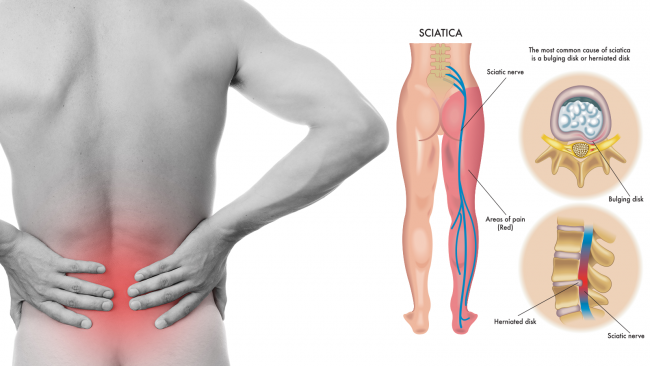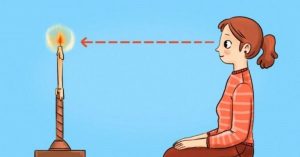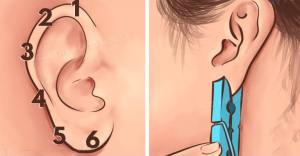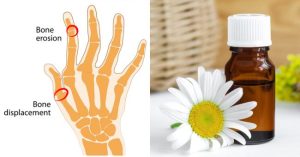Are you struggling to lose weight and maintain a healthy diet? You may have a toxic fatty acid that blocks weight loss.
Here's how a simple “Ice Hack” speed up my fat loss and helped me restore my health, watch now.
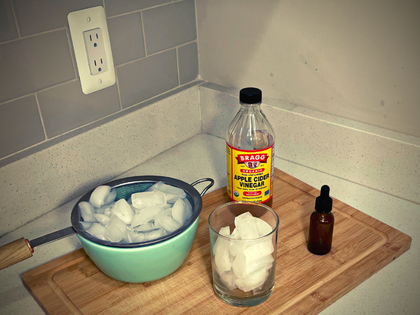
Lower back pain is an unfortunately common issue that affects many individuals. One of the leading causes of this discomfort is sciatic nerve pain. The sciatic nerve, the longest nerve in the body, originates from the spine, passes through the buttocks, and extends down the legs. Fortunately, stretching has been proven to be an effective method for treating lower back and hip pain.
Here are 8 Sciatica Stretches That Prevent and Relieve Hip and Lower Back Pain:
Include these stretches into your routine and lead to significant improvements in your well-being.
1. Sciatica Mobilizing Stretch
To begin, lie on a yoga mat with your knees bent and place a cushion or hard pillow under your head for support. Bring one knee toward your chest and hold it with your hands. Slowly stretch the leg upward, counting to 30, and then return to the original position. Straighten your leg on the mat and repeat this sequence three times with both legs.
2. Both Knee To Chest Stretch
Next, lie on your back on a yoga mat. Similar to the previous stretch, place a cushion or firm pillow under your head for comfort. With your hands on both knees, gradually bring them toward your chest. Hold this position for a count of 30 and then return to the initial position. Repeat this sequence three times.
3. Piriformis Muscle Stretch
To perform the piriformis muscle stretch, lie on your back on a yoga mat with your legs in a bent-knee position. Cross one leg over the opposite knee. Grasp the thigh of the leg whose foot is on the floor and gently pull it toward your chest. Hold for a count of 30 and then return to the original position. Repeat this stretch three times.
4. Cat-Camel Poses
Assume an all-fours position, aligning your arms directly below your shoulders. Make sure your knees are in line with your hips. Begin by arching your back upward, resembling the shape of a cat. Hold this position for a count of 10 and then return to the initial position.
Next, lower the middle of your back into a reversed arch, lifting your head up. Maintain this pose for a count of 10. Repeat this sequence 12 times.
5. Standing Hamstring Stretch
Stand with your feet together in front of a sturdy table, bench, or ledge that is approximately hip-width high. Elevate one leg while resting the heel on the object in front of you. Bend forward at the waist with a straight spine and hold for 30 seconds. Release, return to the initial position, and repeat this stretch three times.
6. Frog Pose (Advanced)
For those seeking a more advanced stretch, try the frog pose. Begin on all fours with your hands on the floor, widening your knees apart. Keep the inside of the calf and foot of each leg touching the floor. Gradually lower your body down to the forearms and hold this position for 30 seconds. Repeat the frog pose three times.
7. Two Knee Twist
While lying on your back with your knees bent and a pillow below your head, spread your arms to the sides to form a T shape. Rotate your knees to the left and hold for 60 seconds. Switch sides and repeat this stretch three times.
8. Child’s Pose
Assume an all-fours position and slowly extend your hands forward while lowering your body into a crouch. This is known as the child’s pose, a relaxing stretch that can provide relief to the lower back and hip region.
In addition to regularly performing these helpful stretches, there are other techniques you can try to further alleviate the pain and symptoms associated with lower back and hip pain:
- Heat or Ice Therapy: During a sciatica flare-up, you can utilize heat or ice therapy. To reduce local inflammation and alleviate sharp pain, wrap ice in a cloth towel and apply it to your lower back for approximately 15 minutes. Alternatively, you can use an electric heating pad or a hot water bottle against the affected area for 10 to 20 minutes. The warmth will dilate blood vessels, improve blood flow, and relax the muscles.
- Self-Massage: Give yourself a massage using a tennis ball, which can be highly effective. Lie on the floor and place the tennis ball under your buttock or upper thigh. Slowly roll over the ball until you find a tender spot, then focus on that area with gentle pressure. This pressure-point massage can help alleviate pain.
- Mind-Body Techniques: Consider incorporating mind-body techniques into your routine, such as deep breathing exercises, meditation, guided imagery, and cognitive-behavioral therapy. These practices promote muscle relaxation and enhance the sense of control over pain.
By following these stretches and incorporating additional techniques, you can effectively manage and reduce lower back and hip pain. Remember to consult with a healthcare professional or physical therapist before starting any new exercise or stretching regimen, particularly if you have an underlying medical condition.

